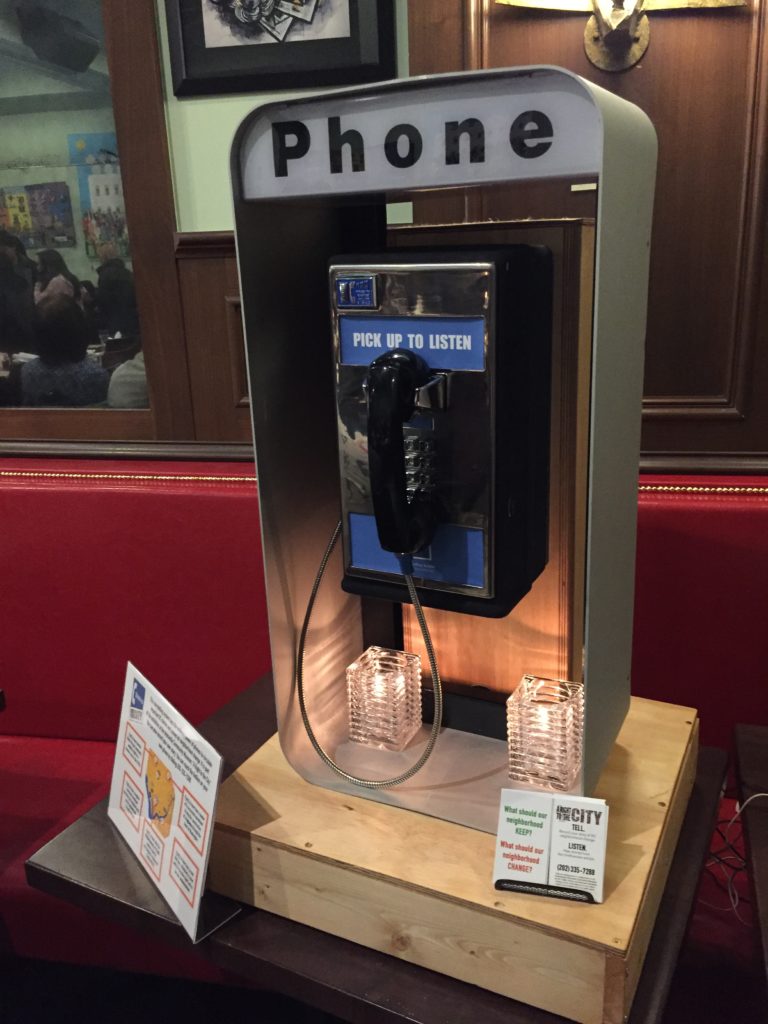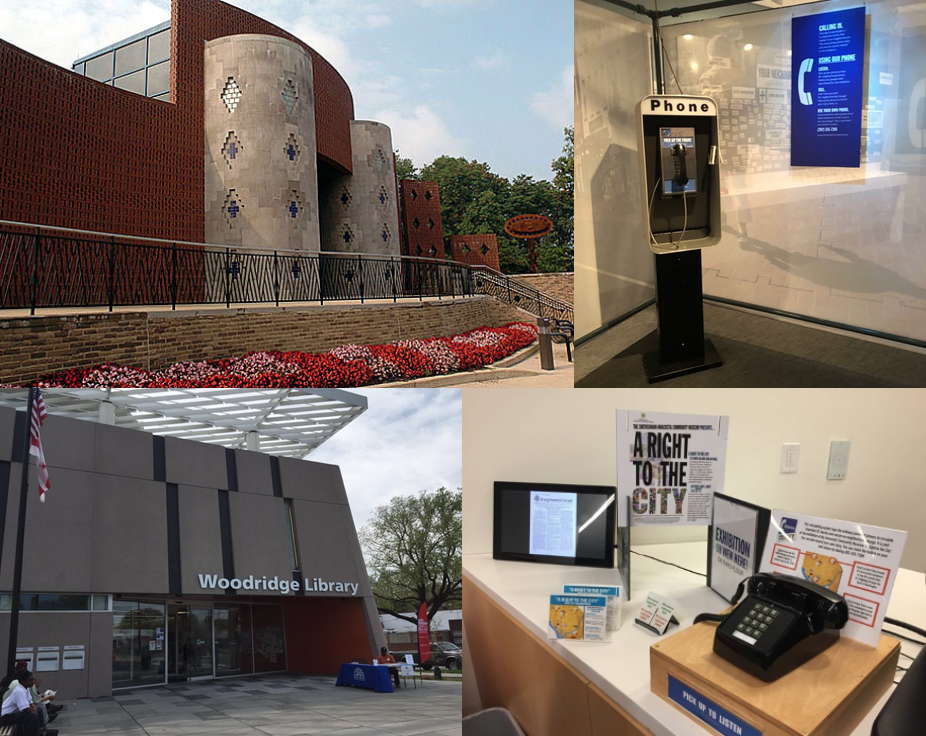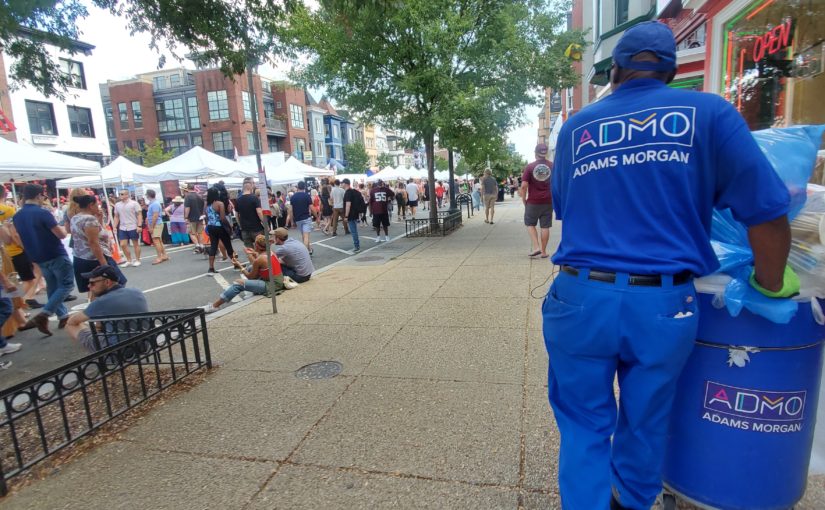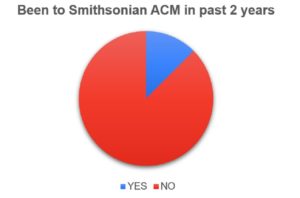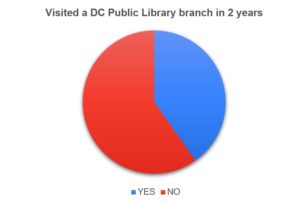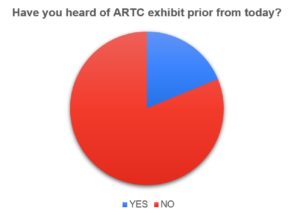This is part 2 of my personal reflection on the DC Storytelling System and the AU Humanities Truck. If you have not read part 1 about my insights on designing playful community experiences, you can do so here.
In my previous post, I shared some of my insights from working on the DC Storytelling System. Now I want to share some of our playful ideas that build on our previous experience and take advantage of the affordances of Hive Mechanic, the AU Humanities Truck, and our existing system. Some of these ideas are ones we are working on now or planning to implement in the future, while others could serve as inspiration for others who want to pursue similar playful projects.
Concept 1: Oral History Audio Tour
Our current hotline does a pretty good job sharing interesting audio stories, but could be more effective at tying the stories to physical locations. Thankfully, the Humanities Truck provides a great anchor to embed the stories within their communities of origin. We could park the Humanities Truck in a central location in the community and use it as a starting point to direct participants to notable places in the area. When participants arrived at those locations, they could call/text the hotline and hear original recordings about those locations.

Photo credit: Benjamin Stokes
This is similar to what we’ve done before with the Adams Morgan Day Scavenger Hunt, except it takes full advantage of the audio capabilities of Hive Mechanic. Alternatively, you could also use a platform like ARIS to help strengthen the connection between story and place. If participants ever get lost, or if they want to learn more, they could return to the Humanities Truck and expert guides could provide them with more information. Multiple audio tours could be created for multiple communities across DC, and the Humanities Truck could drive to those various locations to help initiate and facilitate their interactive audio tours.
Concept 2: Community Photo Sharing
Recently I worked on a project in collaboration with the Playful City Lab and El Studio called Alley Hoppin’. Alley Hoppin’ is an exhibition designed to change the way we think about alleyways and showcase interesting ways that alleys are being used in DC. One of the notable features of the exhibition is its interactive alley collage. Participants take photographs of their alleys on their phones and text them in to a system we built in Hive Mechanic. That photo is then automatically printed out from a wireless printer and then added to the growing physical collage of DC alleyways.
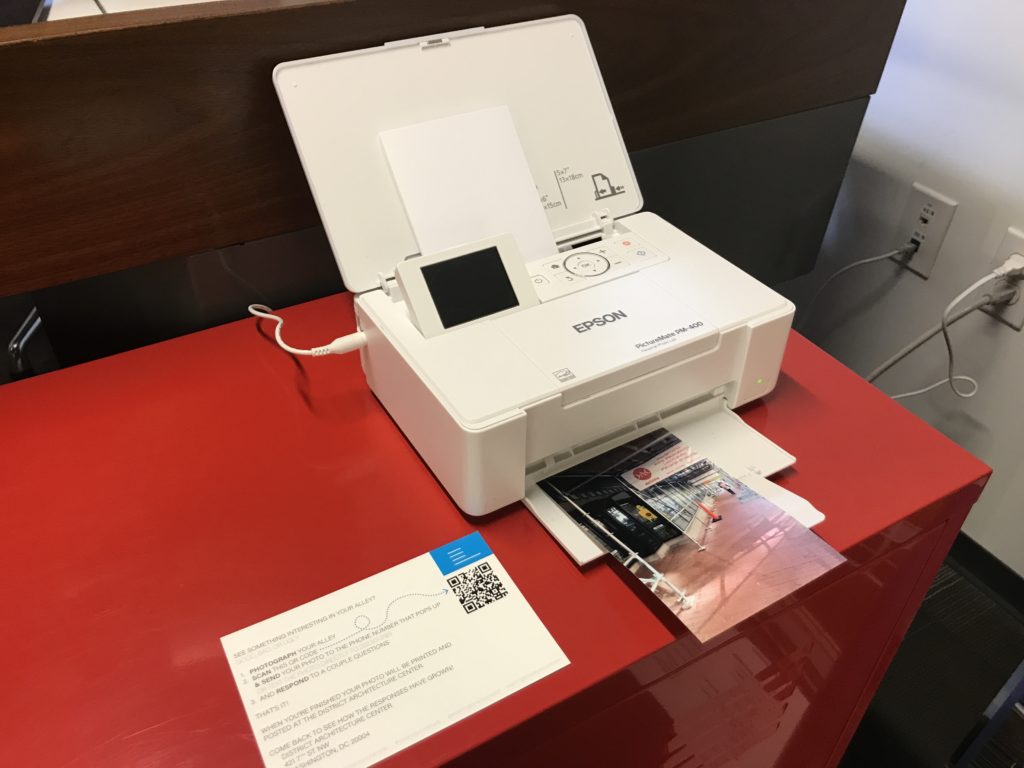
Photo credit: Benjamin Stokes
We could easily implement a similar system designed specifically for the Humanities Truck. During public events featuring the truck, we could encourage participants to share photos with us that fit a given theme. As the photos are texted in, we could print them out automatically using a wireless printer connected to the Humanities Truck’s wi-fi. Once printed, we could then mount the photos (either on the inside or the outside of the truck) so that everyone could see the collage we’ve created together.
Concept 3: Hello Humanities Truck
Similar to the existing project Hello Lamp Post and our current “Talk to a Statue” project, what if people could strike up a conversation with the Humanities Truck itself? Using a tool like Hive Mechanic, we could create an interactive chat bot using SMS. Players could send text messages to the Humanities Truck (possibly initialized with the phrase “Hello Humanities Truck”), and then have a conversation with it. We could give the truck a personality (i.e. maybe it’s friendly? Funny? Sarcastic?), use it as a way to share content (such as by sending pictures, videos, audio files, or links through text messages), or more use it to share more information about the truck and its ongoing projects.
Concept 4: Hive Mechanic Game Jam
During Global Game Jam 2020, the Playful City Lab hosted a short jam session focused on building games in Hive Mechanic. While this was a fun and informative experience, it showed us that there is plenty of room to expand it into a full event. What if we invited coders, hackers, designers, and community organizers to come together and create playful community experiences in Hive Mechanic? We could either focus the jam on a specific problem or theme (e.g. what games could we design for the Humanities Truck?) or leave it open for people to focus on their own local communities.
Concept 5: Arcade Mounts
Our mounts have already gone through numerous iterations to become more professional and engaging. But what if they were even more playful? Currently our team is experimenting adding various new ways to interact with the mounts beyond just the phones. Some of the ideas we are testing include using embedded touch screens, arcade buttons using Makey Makey, interactive LEDs, and raspberry pis. This could offer many more ways to create games that could utilize our mounts…
Concept 6: Arcade Truck
…But why stop at just making the mounts more interactive? What if we turned the Humanities Truck itself into a game controller?!? We could set up buttons on the inside and the outside of the truck and then use the interior and exterior screens to display feedback and instructions. Maybe players inside the truck have to relay information to players outside the truck so that they can push the correct buttons on the exterior of the truck? Maybe the truck could serve as a command center that sends instructions out to players within the community using Hive Mechanic? By changing or creating new ways to interact and play, we can create a wide variety of novel games that capitalize on the affordances of the Humanities Truck.
This post was contributed by Mitchell Loewen, a Game Design graduate student at American University, with feedback from the team at The Playful City Lab.
